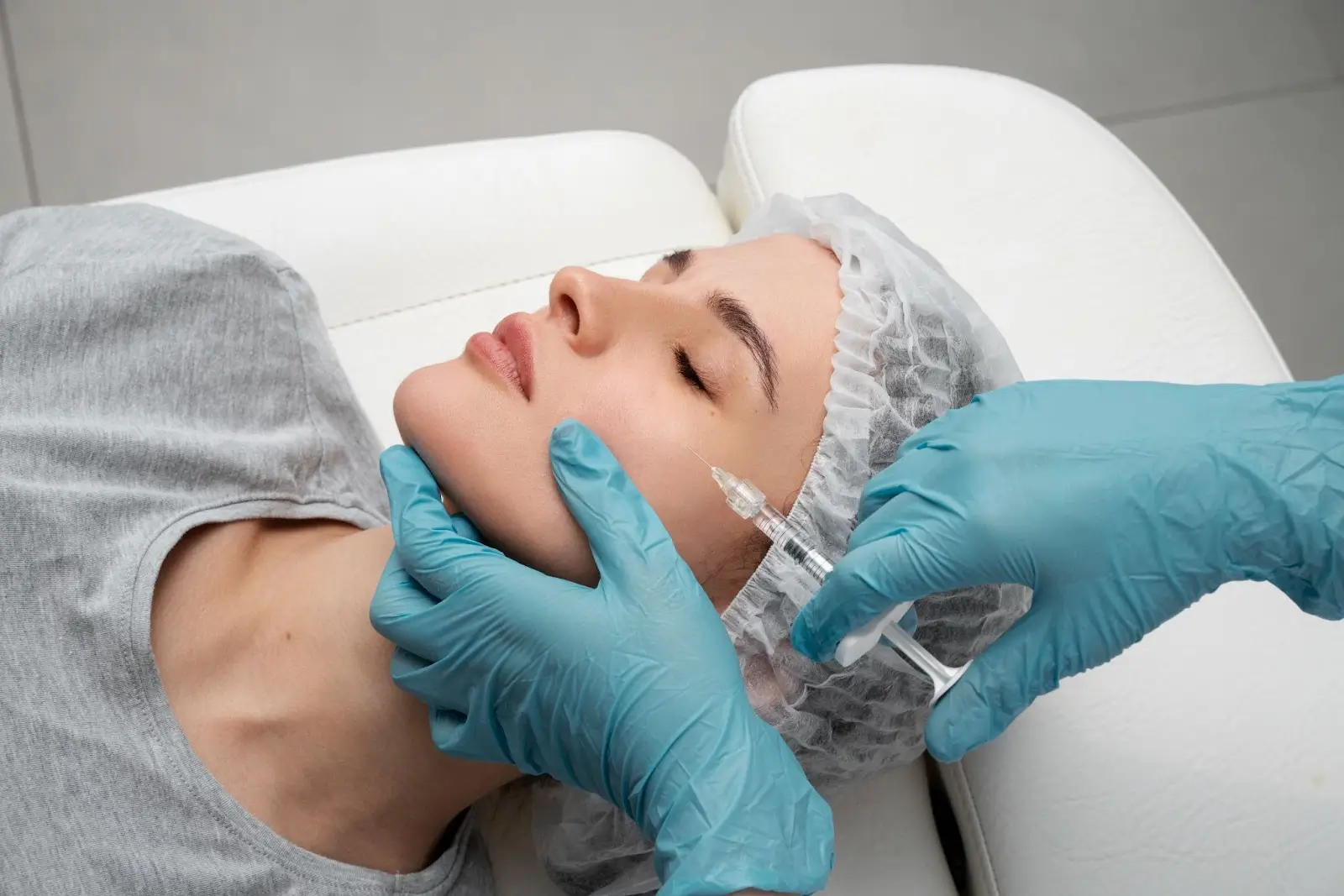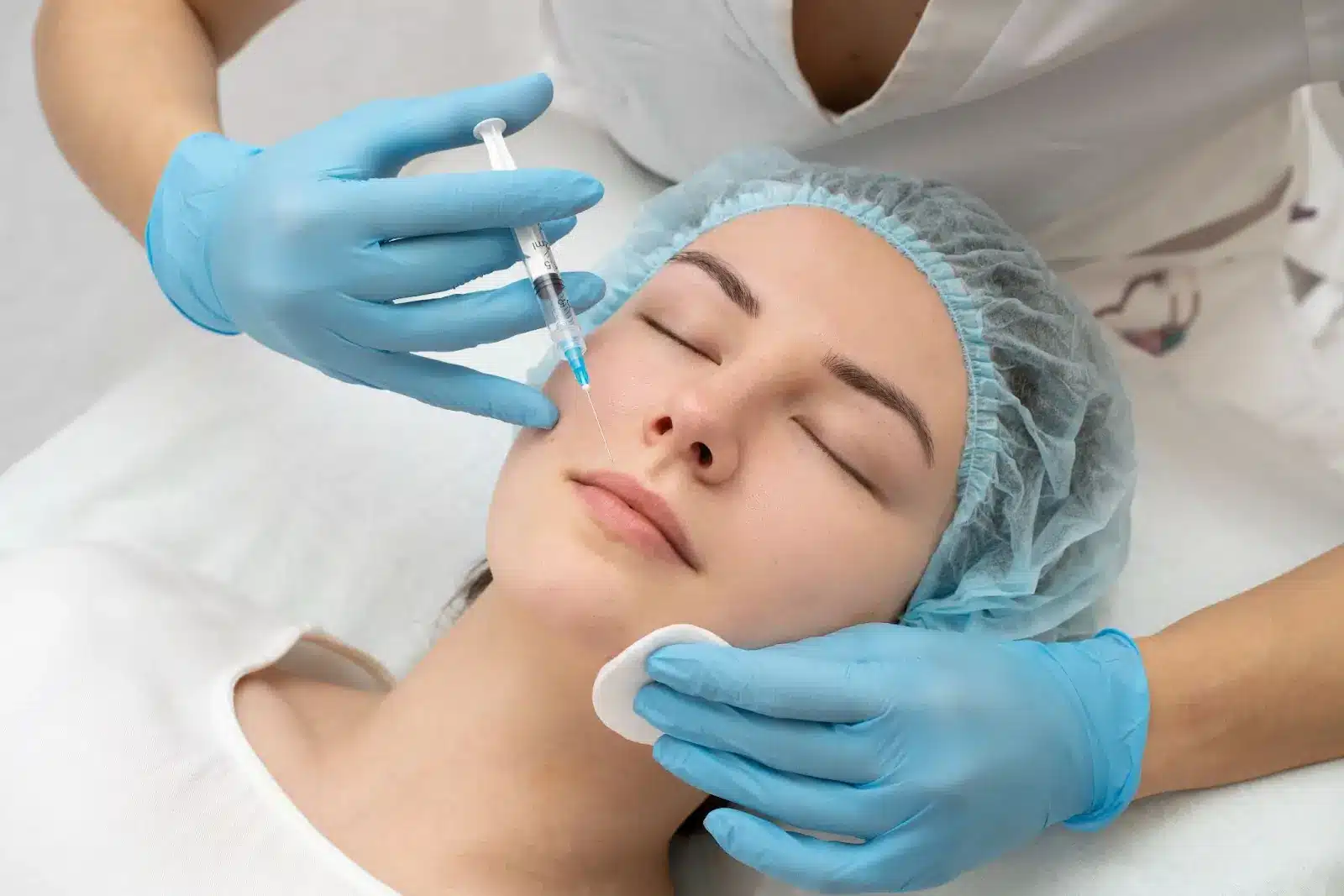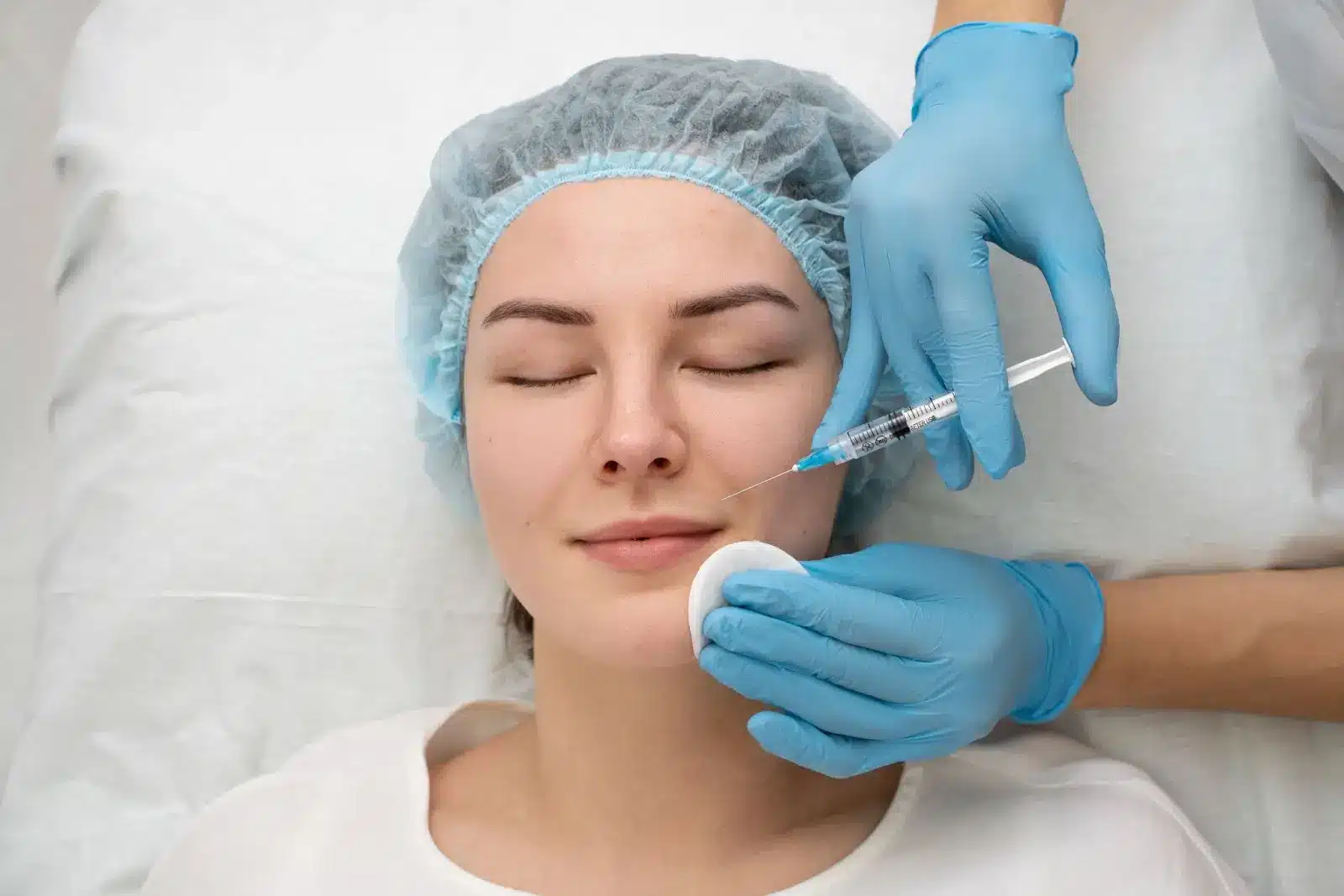
Botulinum toxin treatments have become a cornerstone of both aesthetic and medical procedures, offering effective solutions for wrinkle reduction and muscle relaxation. However, not all botulinum toxins are created equal—differences in formulation, protein complexes, and purification processes can significantly impact their performance, safety, and how patients respond.
Among the most well-known brands in this field are Meditoxin and Botox, each delivering powerful effects but with subtle differences that could influence treatment outcomes. While both Meditoxin and Botox work by targeting and blocking nerve signals to specific muscles, each product has unique qualities that may make one more suitable than the other, depending on patient needs.
In this article, we’ll explore the key differences between Meditoxin and Botox, diving into their characteristics, effectiveness, safety profiles, and practical considerations, so you can make an informed choice for your aesthetic or medical needs.
Key Takeaways
- Meditoxin and Botox are both botulinum toxin type A products used for aesthetic and medical treatments, but they differ in formulation, onset speed, diffusion profiles, and duration of effects.
- Meditoxin typically shows visible effects within 2–4 days, with some anecdotal reports suggesting a quicker onset, though this has not been proven in clinical trials. Botox, on the other hand, takes 5–7 days to show visible results.
- In terms of diffusion coefficient and range, Meditoxin’s is lower, making it ideal for more localized treatments, such as glabellar lines and crow’s feet. At the same time, Botox has a broader diffusion range, which may require more careful handling to avoid affecting nearby muscles.
- Both products last 3–6 months on average. Some anecdotal reports suggest Meditoxin may last up to 8–12 months, though this has not been consistently demonstrated in clinical trials.
- Meditoxin is free of animal-derived proteins, which may reduce the risk of allergic reactions. Meanwhile, Botox contains human serum albumin and sodium chloride, which may contribute to a broader diffusion range and a more established track record.
- Meditoxin offers a straightforward reconstitution process, making it easier to handle, while Botox requires careful reconstitution to avoid foaming, and its preparation can be more time-consuming.
- Botox has a global presence, being approved in over 100 countries, and is widely recognized. Meditoxin, on the other hand, is generally more affordable and is gaining traction in Europe and the U.S.
About: Doctor Medica is your trusted supplier of top-quality dermal fillers, viscosupplements, and more for your medical practice. We offer genuine products from leading brands at the lowest prices in the market. If you’re looking to order Meditoxin online for your practice, contact Doctor Medica today.
Molecular Structure & Complexing Proteins

When comparing Meditoxin vs Botox, both are botulinum toxin type A products derived from Clostridium botulinum. However, their formulation and protein composition differ, influencing their performance, reconstitution practices, and potential for immunogenicity. Below is a side-by-side comparison of their key structural features:
- Molecular Weight: Both Meditoxin and Botox have a 900 kDa neurotoxin complex.
- Stabilizer: Meditoxin uses a gelatin-based buffer without human serum albumin, while Botox contains human serum albumin and sodium chloride (NaCl).
- Formulation Base: Meditoxin is animal protein-free, which can reduce the risk of allergic responses in sensitive individuals. Botox, on the other hand, contains albumin derived from human plasma.
- Complexing Proteins: Meditoxin includes accessory proteins formulated to minimize immune sensitization, whereas Botox also contains accessory proteins that stabilize the toxin molecule.
- Reconstitution Behavior: Meditoxin mixes smoothly and predictably with saline, whereas Botox requires careful handling to prevent foaming during reconstitution.
These differences may not significantly impact clinical outcomes for most users; however, Meditoxin’s absence of animal or human-derived proteins can be beneficial for sensitive patients or those at a higher risk of developing antibodies. Additionally, Meditoxin’s dilution and reconstitution protocols provide clear guidance for ease of preparation.
Diffusion, Onset & Duration
Understanding clinical performance is crucial when comparing Meditoxin vs Botox, especially for practitioners and patients seeking targeted, predictable results. Though both are botulinum toxin type A injectables, subtle distinctions in how quickly they work, how far they spread, and how long they last can influence product selection and treatment outcomes.
| Feature | Meditoxin | Botox |
| Onset of Action | Visible effects within 2–4 days post-injection, faster in some cases (anecdotal) | Visible effects within 5–7 days post-injection |
| Diffusion Profile | Lower diffusion coefficient (~0.23 cm²/day), ideal for localized applications like glabellar lines and crow’s feet | Broader diffusion range, risk of spreading to nearby muscles if not handled carefully |
| Duration of Effect | Lasts 3–6 months; some anecdotal reports of lasting up to 8–12 months | Lasts 3–6 months (reliable and consistent) |
Ultimately, the decision between Meditoxin and Botox comes down to individual treatment goals. Patients who prioritize faster onset may lean toward Meditoxin, while others may prefer Botox’s established track record and broader availability. Understanding these distinctions supports more informed and personalized care.
Clinical Trial Data & Side-Effect Profiles

Clinical studies confirm that both Meditoxin and Botox offer safe and effective symptom control for neuromuscular and aesthetic applications. In blepharospasm trials, Meditoxin demonstrated a 30–90% improvement by day 4, similar to Botox’s improvement at 28 days.
Both products have shown non-inferiority in double-blind randomized controlled trials (RCTs), particularly in blepharospasm, with results showing comparable effectiveness in improving patient outcomes.
Reported side effects are generally mild and localized. Common reactions include bruising, redness, swelling, or temporary eyelid ptosis (which occurs in approximately 3% of cases). These reactions typically resolve within days and require minimal intervention, regardless of the product used. Systemic effects, such as fatigue, headache, or mild muscle weakness, are infrequent and usually transient, with no long-term complications.
Overall, clinical comparisons between Meditoxin and Botox show no meaningful difference in adverse event rates, reinforcing confidence in their shared safety profile.
Practical Considerations
Here’s how Meditoxin and Botox compare in real-world practice, especially for clinicians and med-aesthetic professionals evaluating product efficiency, cost, and usability. While both are botulinum toxin type A formulations, their handling, pricing, and logistical differences influence clinical decisions and operational convenience.
Pricing & Market Reach
- Botox: Globally recognized and has a long-standing reputation with premium pricing. It is available in over 100 countries and remains the industry gold standard.
- Meditoxin: More affordable and is gaining traction in Europe and the U.S. It is available in approximately 27 countries (mostly in Asia) and is becoming a popular alternative for those seeking a cost-effective solution.
Reconstitution & Preparation
- Botox: Supplied as a lyophilized powder that requires careful dilution with sterile saline, and the reconstitution process can be more time-consuming and prone to error if not handled with precision.
- Meditoxin: Known for its ease of use, reconstituting smoothly and clearly, maintaining full potency when protocols are followed.
Storage & Shipping
Both products require refrigerated storage (2–8°C). Botox must be used promptly if left at room temperature, whereas Meditoxin’s clarity upon reconstitution is often cited as a visual QC advantage in busy clinics. This feature helps ensure proper quality control, especially when working with multiple vials.
To sum it up, both products deliver effective results. However, Meditoxin offers affordability, ease of preparation, and expanded market access. For clinics balancing budget and performance, Meditoxin may be a practical alternative that does not compromise safety or efficacy.
Conclusion
When comparing these treatments, both Meditoxin and Botox provide predictable and effective results with mild side effects and a duration of 3–6 months. Meditoxin offers clinical handling advantages—rapid onset, simplified reconstitution, and clean formulation—while Botox boasts an established global presence and regulatory trust.
The choice often comes down to workflow preference, cost considerations, and brand familiarity. Ultimately, both are excellent options when administered by skilled clinicians.
FAQs
1. Are Meditoxin and Botox interchangeable?
No. Their units are not interchangeable due to molecular differences. Dosing should be individualized per product efficacy studies.
2. Does Meditoxin have fewer side effects?
Both share similar safety profiles. Meditoxin lacks albumin, but there is no substantial evidence of fewer side effects.
3. Can Meditoxin be self-administered?
No—both require professional injection due to the risk of muscle paralysis and precision needs.
4. Which is better for quicker results?
Meditoxin may offer a faster onset, typically within 2–4 days, compared to Botox’s usual onset of 5–7 days.
References
Dover JS, Monheit G, Greener M, Pickett A. Botulinum toxin in aesthetic Medicine: myths and realities. Dermatologic Surgery. 2017;44(2):249-260. doi:10.1097/dss.0000000000001277
Carruthers A, Kane MA, Flynn TC, et al. The convergence of medicine and neurotoxins: a focus on botulinum toxin type A and its application in aesthetic medicine–a global, evidence-based botulinum toxin consensus education initiative: part I: botulinum toxin in clinical and cosmetic practice. Dermatol Surg. 2013;39(3 Pt 2):493-509. doi:10.1111/dsu.12147
Yoon JS, Kim JC, Lee SY. Double-blind, randomized, comparative study of Meditoxin versus Botox in the treatment of essential blepharospasm. Korean J Ophthalmol. 2009;23(3):137-141. doi:10.3341/kjo.2009.23.3.137
Frevert J, Ahn KY, Park MY, Sunga O. Comparison of botulinum neurotoxin type A formulations in Asia. Clin Cosmet Investig Dermatol. 2018;11:327-331. Published 2018 Jul 5. doi:10.2147/CCID.S160723
Related Articles
Joanna Carr
Eylea Side Effects – A Complete List
Explore a comprehensive list of Eylea side effects, from common reactions like eye discomfort to rare complications, ensuring informed treatment decis...
Joanna Carr
Lanluma Side Effects – Short Term, Long Term, Mild, Serious
Understand Lanluma’s potential side effects—from mild, short-term reactions to rare, serious complications. Learn what to expect and how to manage pos...
Joanna Carr
Profhilo Under Eyes – Before And After Photos
Profhilo is an effective treatment for improving the appearance of the under-eye area by reducing fine lines, wrinkles, and dark circles while enhanci...


